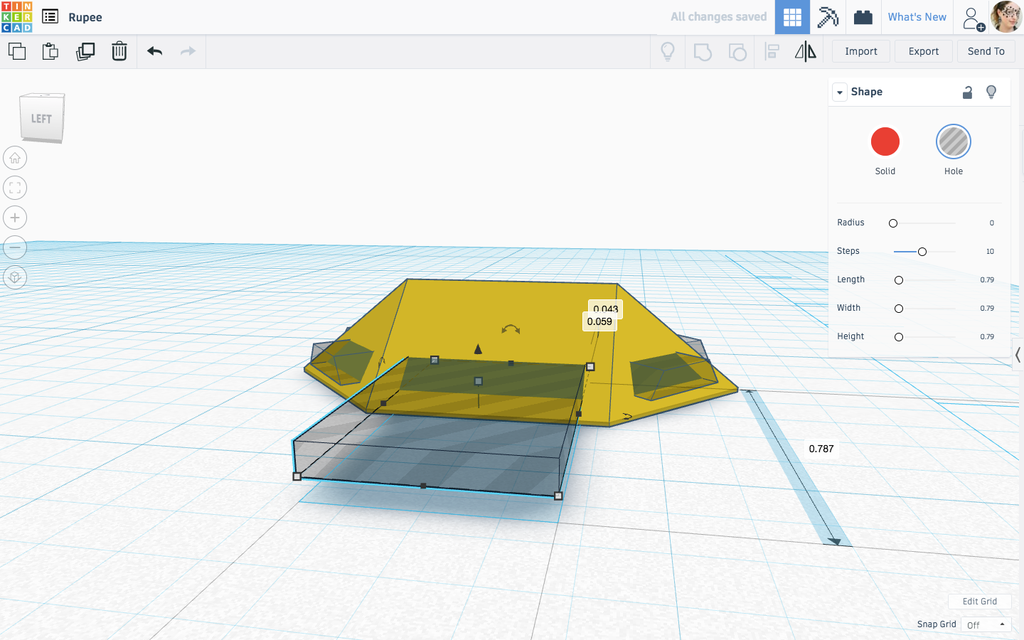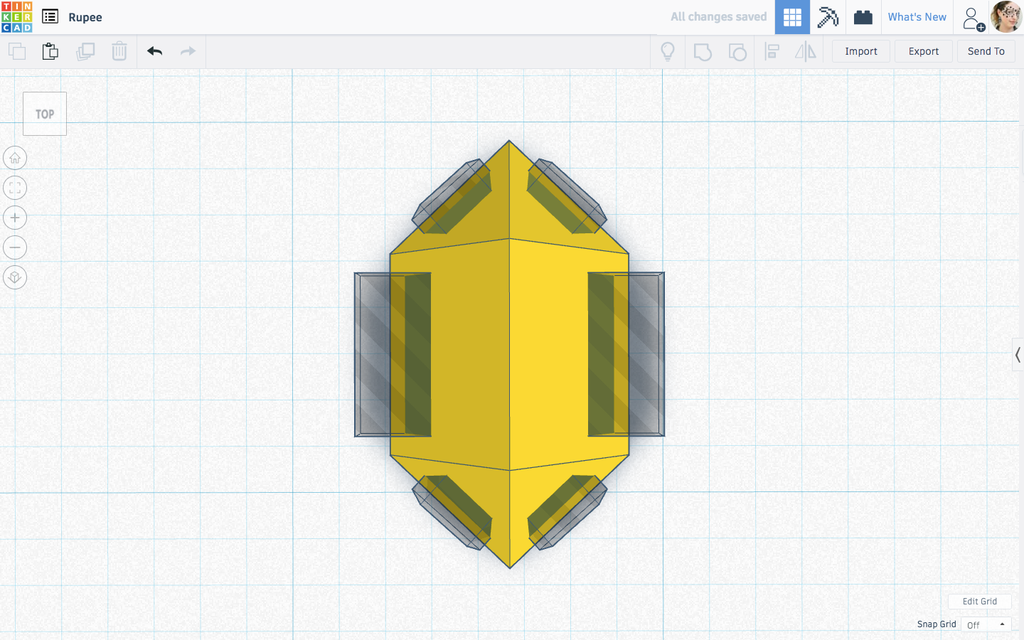Introduction: 3D Rupee Earrings
I thought it would be fun to make a set of simple 3D Rupee cutout earrings. Inspired by the rupees in the Legend of Zelda video game. So I did :)
These fun earrings are easy to print in 2 pieces that easily line up and glue together.
Instructable 299

You can buy these 3D print Rupee Earrings in any color (I have) in my Etsy Store.
Step 1: Supplies
Supplies:
- 3D Printer - I'm using a Prusa MK3
- Filament in the colors you want, I printed them off in all my colors, but the main ones I used are:
- Glue - I'm using Weld-On 4 Acrylic Adhesive
- Earwires
- Jewelry Pliers
Step 2: Design - Tinkercad
I created my design in Tinkercad using basic shapes. This idea started when I was trying to make a 3D diamond with cutouts. I want to revisit it, but the trouble I had printing it led me to abandon it. When I decided to work on the rupee, I decided what I needed to to make it work this time, was create two pieces that are meant to be glued together instead of trying to print it as one piece.
I did tests and kept going back to make adjustments to make sure it would slice and print the best I could get it. Meaning I needed lines to be completed and sections to not be too small. I'm going to go through this very basically with step by step instructions, but the actual process to get to the finished design included many tests, reprints, and redesigns.
Designing
To begin with, I started with 2 triangles and a square as the base. I could have used a hexagon but with three separate shapes I had more control over the size and this helped me get the sizes right for the shapes in the next step. The pieces are 0.24mm thick and the whole shape is about 16.20mm by 29.10mm. Also, I started with these basic shapes instead of starting with the next step/image because I wanted to ensure I had at least 1 layer that was a sturdy base.

Now to give it depth we are going to use 2 pyramids and a roof shape. Because I knew the exact size of the base pieces all I needed was to make the roof the same length and width of the square while the pyramids needed to be the same width and twice the height of the triangles. When overlapped right, I got a nice 3D rupee shape.

Now I have the 3D rupee (SHAPE A).

Time to make the cutouts. I used distorted roofs with the tops cut off with rectangles to make cutouts for the top and bottom ends.

For the center, I just needed a rectangle cutout.

Make sure everything is lined up right. I tend to use align a lot and the ruler.

Now I have all the side cutouts, but I still have the bottom and top to cut.

To cut out the bottom, I copied my shape and kept ungrouping until I had the original 3D rupee shape (what I labeled SHAPE A above). I shrank this down until I was happy with the wall thicknesses and then made it into a hole to cut out the bottom and inside of the rupee.

Lastly, I needed to cut the top. This was pretty easy, I just took a rectangle and brought it up so the rupee would be as thick as I needed it and grouped to cut the top.

Now I have the rupee, but I need a hole for attaching a jump ring. I went with a cylinder that was about 1.35mm in diameter.

Finished rupee!

Here is just a look at one it will be like once it is printed and glued together. I did bring this into the slicer to see how it looked, but it was messy, would require more support than I wanted to deal with, and the top where the hole is would be too weak to work with just support. It needed a flat base.

You need 4 halves to make 1 set of earrings.

Time to slice!
Step 3: Slice
After multiple tests, I decided these details made for the best print using my slicer: Simplify 3D.
- 1 Outline (my default is 2, but if I did 2 I ended up with an ugly gap on the top
- 35% Outline Overlap
- Support - I had to add it in where I needed it, but make sure the overhangs are supported unless you are sure you can print it fine on its own
- 100% Infill - I always do this for small prints
- No skirt or brim is needed
Make sure you check out the layers and make sure everything that needs to be is supported and looks like it is going to print right.
Step 4: Print
Once you have the prints off, you need to pull off all the support. Make sure you don't wreak the rupees while you do it.
Step 5: Fixing?
So, I noticed when I pulled the support off, sometimes there would be a white mark on the rupee. You can try to cut/shave this off, but one way to fix this is to quickly and lightly touch it with a wood burner/soldering iron. I use my old not very good wood burner for things like this. Just remember that the rupee isn't that thick so it will be easy to accidentally melt through it if you aren't careful.
Step 6: Glue and Earring
Time to glue! Make sure you put something down to protect your workspace.
The way I glued them was, I held one side so it was almost perpendicular. Then I carefully dripped the glue down the flat side so it covered the whole surface.
Then, stick the pieces together. If you use the glue I did, you have to make sure you align it right and push it together quick; the glue dries really fast.
Also, I used a sequins pin (because I have them around) and made sure the hole didn't get blocked by glue.
Step 7: Add Earring
Because of the way the hole is, you should be able to attach the rupee right to an earring and it should hang correctly. If it doesn't, you'll need a small jump ring between them.
Step 8: Done
I originally just made them in green, red, and blue but then decided to try all the colors I had since they don't take up much filament and I wanted them for my Etsy posting.
What's your favorite color?













